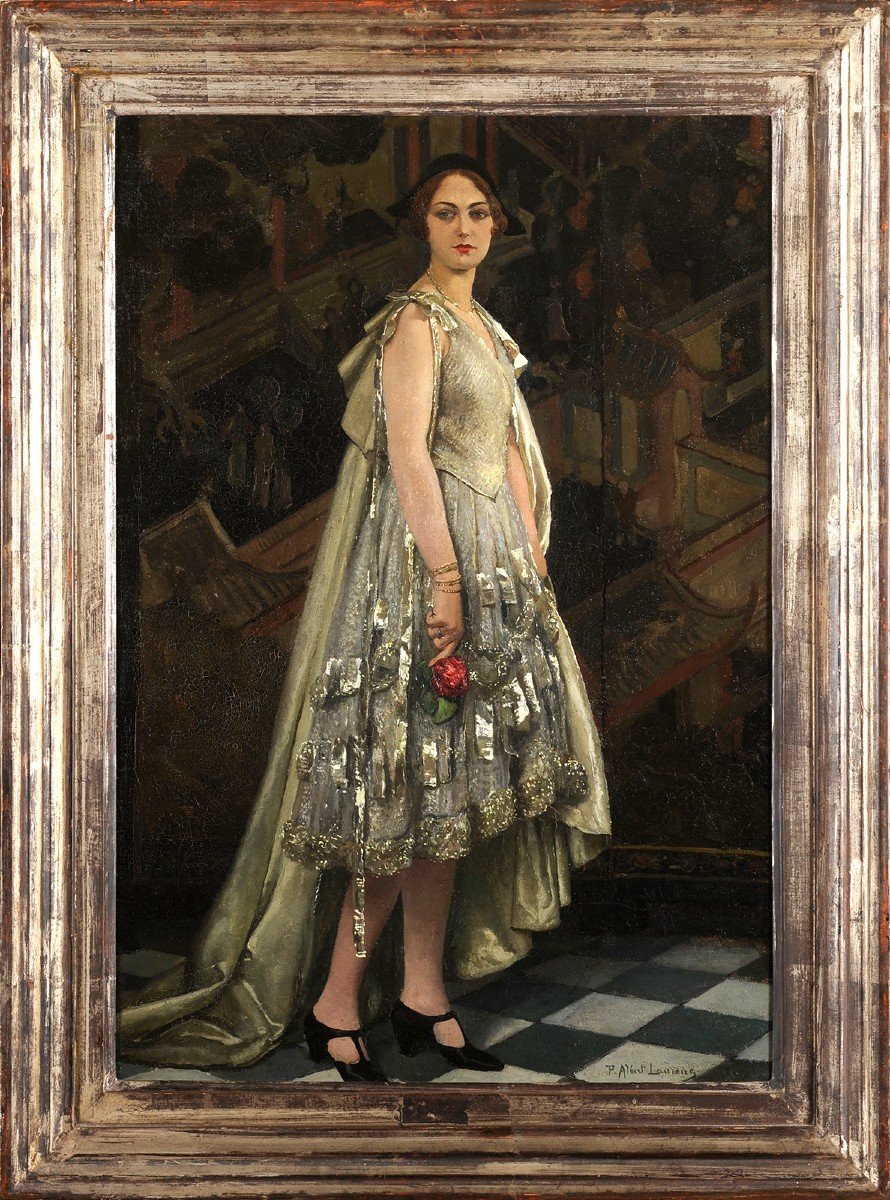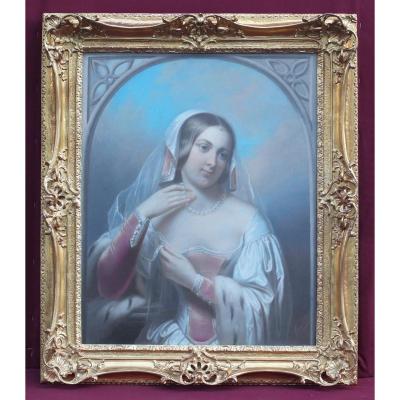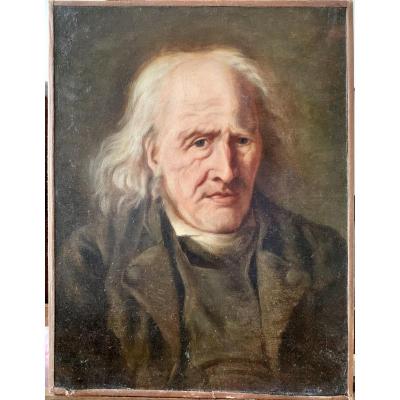(Paris, 1870 – Toulon, 1934)
“La Robe d'argent” - Portrait of Hélène Kauffmann
Oil on canvas
H. 73 cm; W. 50 cm
Signed lower right
Original silver frame
Reworked from a canvas where we can see a foot on the back.
Related works:
- “La Robe d'argent” Musée d'Orsay – Same subject and framing, view of the model from the front - Same format.
- “Portrait of Hélène Kauffmann as a Spanish Woman”, Private collection
- “Jeune femme aux orchidées” (Hélène Kauffmann), Private collection
Son of the great history painter Jean-Paul Laurens, Paul-Albert Laurens was a student of Cormon and Benjamin-Constant. Second Grand Prix de Rome in 1891, he in turn accumulated functions and honors: professor of drawing at the École Polytechnique and the Académie Julian, he received several medals at the Salon, a gold medal at the Universal Exhibition of 1900, the Legion of Honor in 1910, and finally entered the Institute in 1933. He is known in literary history for having been very close to André Gide from his youth, with whom he made an initiatory journey in Algeria, Tunisia and Italy in 1893, and of whom he left a beautiful portrait of maturity.
Not far from a Lucien Simon or a Jacques-Emile Blanche, the art of Paul-Albert Laurens is the reflection of an elegance of the beginning of the century, between Art Nouveau and Art Deco. His touch is lively and controlled. His world is that of modern life, not that of the avant-gardes. A specialty of this excellent portraitist was to paint his female models in dazzling dresses, lamé in gold or silver, sometimes against a background of a Japanese screen. If the model for our painting is a certain Hélène Kauffmann, - a friend or client who can be found in other portraits of the artist -, Paul-Albert Laurens created another version of our canvas, dated 1929 and entitled La Robe d'argent. We find our model posing differently, from the front, in front of this same lacquer screen. As much as the portrait of a woman, our painting seems the portrait of a dress, probably the creation of a great couturier of the interwar period. The original silver frame, typical of the 1920s, matches the metallic sparkle of this sumptuous outfit.
The model, Hélène Kauffmann, was identified without perfect certainty as the wife of Robert Weill, an engineer, and whose children would bear the name Watel, less Semitic than their birth surname. It would seem that the whole family survived the war, having been protected by a family that prevented their deportation. They are now "Righteous Among the Nations". Our model, born in Belgium in 1905, would have been around 23/25 years old when our portrait was made, certainly at the same date as the work in the Musée d'Orsay, i.e. 1929.



























 Le Magazine de PROANTIC
Le Magazine de PROANTIC TRÉSORS Magazine
TRÉSORS Magazine Rivista Artiquariato
Rivista Artiquariato
